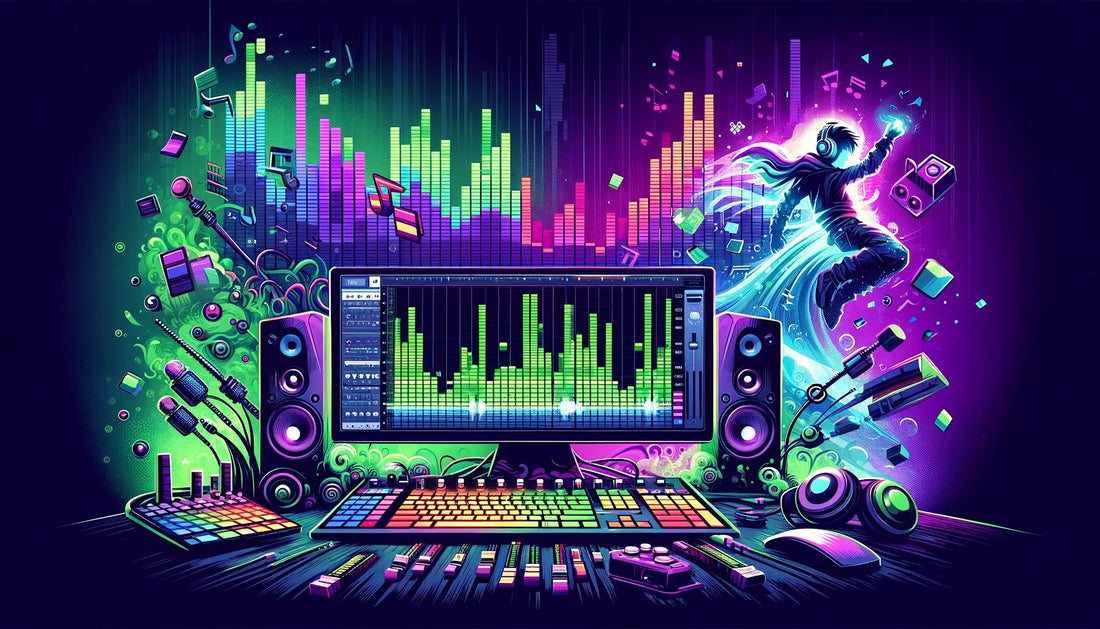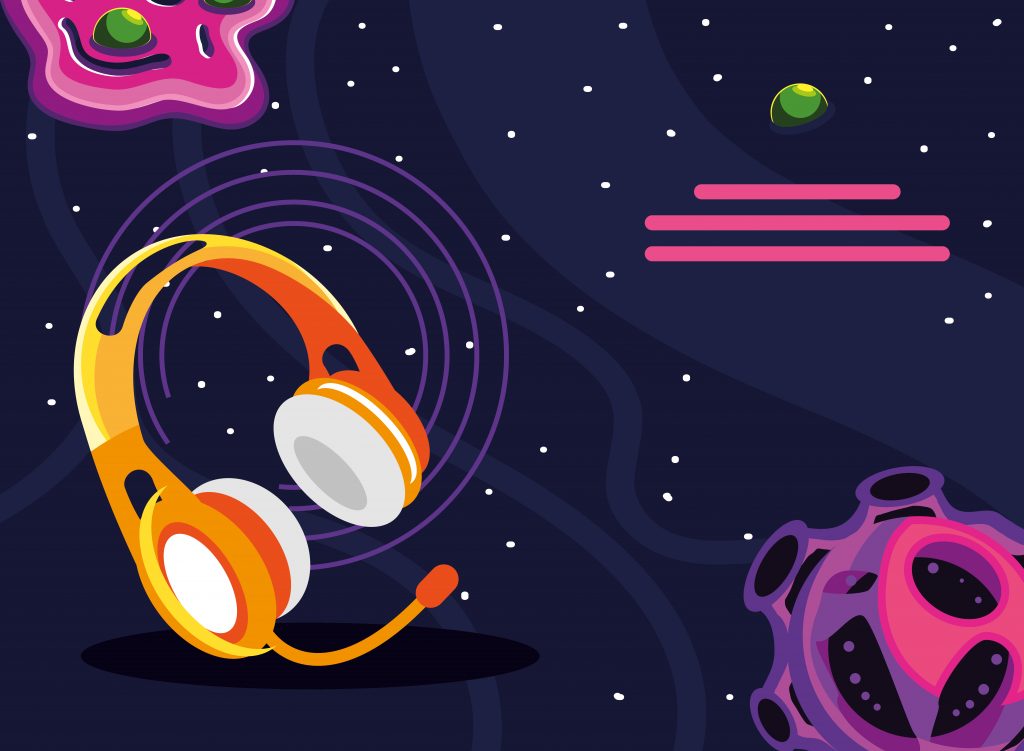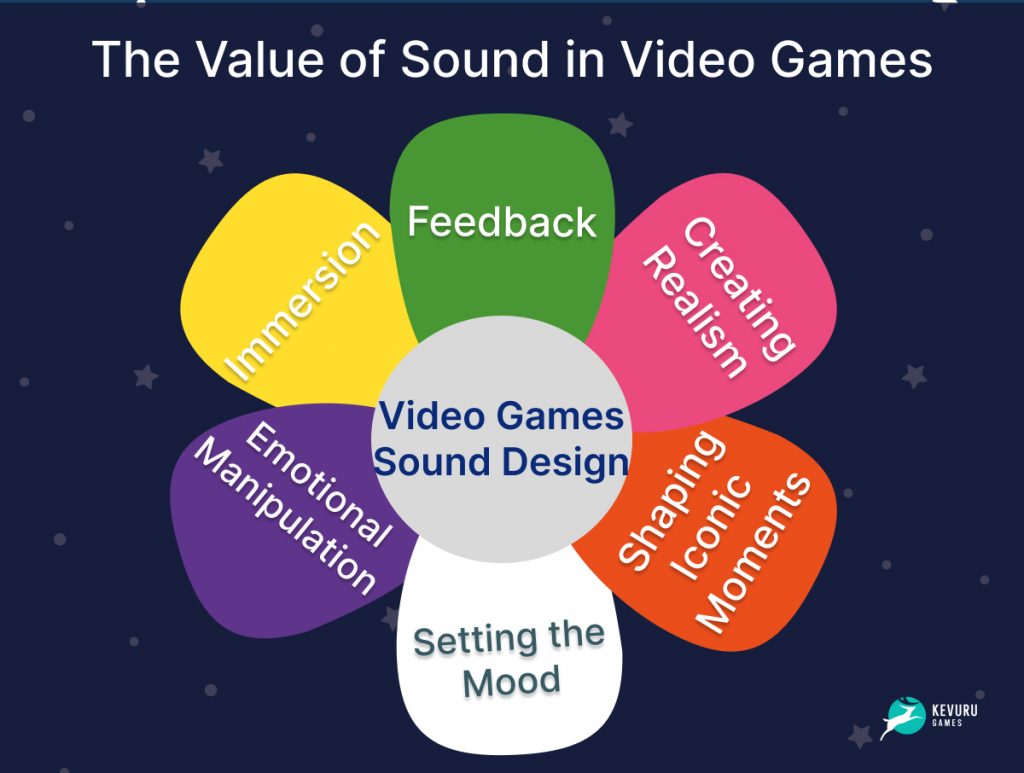
Introduction
Definition of Immersive Soundscapes in Video Games
Immersive soundscapes in video games refer to the carefully crafted audio environments that envelop players, heightening their sense of presence and engagement within a game world. These soundscapes can include everything from environmental sounds, such as rustling leaves and distant thunder, to intricate sound effects that accompany character actions. The goal is to create a multi-dimensional auditory experience that resonates with players, drawing them deeper into the narrative and gameplay.
Impact of Sound on Gaming Experience
Sound is a powerful tool in gaming that can totally transform the player experience. Think about a horror game where eerie whispers or sudden loud noises evoke a sense of fear and urgency. The impact is undeniable! Here are a few ways sound shapes the gaming experience:
- Emotional Engagement: Music can set the mood, making players feel elated, anxious, or nostalgic.
- Immersion: Well-designed soundscapes can make players feel as though they are truly in the game world, blurring the lines between reality and the virtual space.
- Feedback Mechanisms: Sound provides crucial feedback, helping players understand in-game actions or events.
At TECHFACK, we appreciate the depths of sound design and how it intertwines with gameplay, enhancing the overall experience beyond visual elements alone.

The Role of Sound in Video Games
Importance of Audio in Game Development
In game development, audio is not just an afterthought; it is a critical element that shapes the overall experience. Incorporating sound early in the design process helps developers create a cohesive and immersive game world. For instance, during a playtest, developers might discover that a missing sound effect can result in players feeling disconnected from the game mechanics—highlighting the importance of sound in fostering engagement.
Types of Sounds Used in Video Games
To fully appreciate the role of sound, it’s essential to explore the various types employed in gaming. Each category contributes uniquely to the overall atmosphere:
- Environmental Sounds: These include ambient noise like wind, rain, or city sounds. They establish the setting and mood, making players feel as though they are part of a living world.
- Character and Object Sounds: Every character movement, footstep, or weapon engagement can have a sound attached that enriches gameplay. A character’s running footsteps might vary based on the surface they walk on, adding depth to their actions.
- Music and Soundtracks: Music can elevate the emotional stakes, crafting memorable moments in a game. Think of a climactic battle scene enhanced by a powerful score—this combination is crucial for an unforgettable experience.
At TECHFACK, understanding these elements reinforces how sound is integral to creating compelling gameplay narratives.

Creating Immersive Soundscapes
Sound Design Techniques for Video Games
To cultivate truly immersive soundscapes, developers employ various sound design techniques that dramatically enhance the gaming experience. These techniques are not just technical skills but also artistic expressions that breathe life into virtual worlds.
Spatial Audio
Spatial audio is a game-changer, allowing players to perceive sounds from different directions and distances. Imagine sneaking through a dark forest where a crackling branch could indicate an approaching enemy. This technique provides spatial awareness, helping players react intuitively within the game.
Dynamic Sound Effects
Dynamic sound effects adjust in real-time, responding to the player’s actions or the in-game environment. For instance, stomping through water may create splashes of varying intensity, enhancing realism. This approach adds layers of interactivity and keeps players engaged with the world around them.
Adaptive Soundtracks
Adaptive soundtracks change in response to gameplay, offering a seamless musical experience. Picture arriving at a serene lake with a calming score, which intensifies as a threat emerges. This fluid integration of music helps establish emotional highs and lows throughout the gameplay.
At TECHFACK, we celebrate these techniques as crucial elements that define the power of immersive soundscapes in video games.

Psychological Effects of Sound in Gaming
Influence of Sound on Player Emotions
Sound has an incredible capacity to evoke emotions in players, often more powerfully than visuals alone. Think back to moments in games where the music swells just before a pivotal event—this is no coincidence! Game developers meticulously choose soundscapes that align with narrative arcs, manipulating emotions through:
- Tension and Excitement: Fast-paced music or haunting melodies can heighten anxiety or anticipation, getting players ready for action.
- Nostalgia and Reflection: Familiar tunes can trigger memories, creating a deeper emotional connection to the game.
- Joy and Triumph: Uplifting scores can celebrate victories, immersing players in a sense of achievement as they complete challenges.
Role of Audio Cues in Gameplay
Audio cues also serve as essential indicators within the game. These cues guide players and make gameplay more intuitive. For instance, the sound of an enemy reloading a weapon can signal the need for immediate action. Some examples include:
- Notification Sounds: Alerts for low health or completed objectives inform players without needing intrusive visual elements.
- Environmental Cues: The shift in sound when entering a new area prepares players for potential challenges.
At TECHFACK, we understand that the psychological interplay between sound and emotion is pivotal to enhancing the gaming experience.

Implementing Immersive Soundscapes in Game Development
Collaboration between Sound Designers and Game Developers
Creating immersive soundscapes requires a symbiotic relationship between sound designers and game developers. Each has a distinct but interconnected role that ensures audio enhances the gameplay experience. For instance, a sound designer might experiment with various audio effects for an environment, while developers assess how well those sounds integrate with gameplay mechanics. This collaboration yields compelling results, where:
- Regular Communication: Ongoing dialogue about the game’s vision allows both parties to align their creative ideals.
- In-Game Testing: Frequent playtests help identify where sound can amplify emotions or notify players about critical gameplay elements.
Understanding these dynamics is essential for achieving a rich auditory experience that captivates players.
Tools and Technologies for Achieving Immersive Sounds
With advancements in technology, the tools available for sound design are more sophisticated than ever. Developers utilize software like Wwise and FMOD to craft intricate soundscapes. These platforms allow for:
- Real-Time Sound Manipulation: Adjusting audio based on player actions enhances engagement and immersion.
- 3D Audio: Tools that create spatial audio effects enable players to perceive sounds based on their in-game position, fostering realism.
At TECHFACK, we emphasize the importance of these tools and collaborations in designing immersive soundscapes that transform gaming experiences.

Case Studies: Success Stories in Immersive Sound Design
Analysis of Popular Video Games with Exceptional Soundscapes
When it comes to immersive sound design, a few games stand head and shoulders above the rest. Titles like The Last of Us Part II and Ghost of Tsushima harness sound to create rich atmospheres that enhance storytelling and gameplay.
For instance, in The Last of Us Part II, the subtle environmental sounds—like the rustle of leaves or the distant growl of infected—immerse players into a post-apocalyptic world. Meanwhile, Ghost of Tsushima employs traditional Japanese instruments to not only complement the visuals but to also ground players in the cultural setting.
- Cohesive Soundscapes: Both games demonstrate how sound can create a unified experience, making players feel like they are part of the narrative.
Impact of Sound Design on Game Reception
The sound design of these titles positively influences their reception. Critics often praise them for their ability to evoke emotions and create tension, contributing to higher ratings and player engagement. Games that excel in sound design are frequently recognized in award ceremonies, underscoring the essential role that audio plays in establishing a successful gaming experience.
At TECHFACK, we recognize that exceptional sound design can be a game-changer, significantly elevating the player’s journey.

Future Trends in Sound Design for Video Games
Evolution of Audio Technologies in Gaming
As gaming technology advances, so too does the landscape of sound design. The evolution of audio technologies is paving the way for richer, more immersive soundscapes. For example, the rise of Virtual Reality (VR) is pushing sound designers to explore spatial audio to create convincing environments that engage all of a player’s senses.
- Advanced Sound Engines: Tools such as Unreal Engine and Unity are incorporating more sophisticated audio features, allowing for real-time sound manipulation.
- Machine Learning: Developers are beginning to harness AI to create dynamic soundscapes that adapt fluidly based on gameplay, ensuring a unique experience during each play session.
Possibilities for Enhanced Immersive Experiences
Looking ahead, there are immense possibilities for enhancing immersive experiences. Imagine games that utilize haptic feedback alongside audio cues—players could feel the rumble of distant thunder while hearing it approach.
- Dynamic Soundtracks: Adaptive music systems could adjust not only to player actions but also to their emotional state, creating an even deeper layer of engagement.
At TECHFACK, we are excited about these trends, believing they will redefine how players interact with virtual worlds, making every moment not just seen but profoundly felt.

Conclusion
Recap of Importance of Immersive Soundscapes in Video Games
As we reflect on the journey through immersive soundscapes in video games, it becomes clear that sound is not merely an accessory but a fundamental part of the gaming experience. From environmental sounds that set the stage to dynamic sound effects that keep players on their toes, audio has the power to shape emotions, guide gameplay, and enhance storytelling. Games like The Last of Us Part II and Ghost of Tsushima illustrate how exceptional sound design can create unforgettable moments and forge lasting connections between players and the game world.
Potential for Advancements in Sound Design for Gaming
The future of sound design holds incredible potential for further innovation. Emerging technologies such as spatial audio, machine learning, and AI-driven adaptive music offer exciting pathways to create even more immersive experiences.
- Elevated Player Engagement: As audio technology continues to evolve, we can expect players will be drawn deeper into captivating worlds that resonate with their senses.
At TECHFACK, we are enthusiastic about these possibilities and the exciting advancements that will continue to define the power of immersive soundscapes in video games, ultimately transforming the way we play and connect with our favorite titles.

